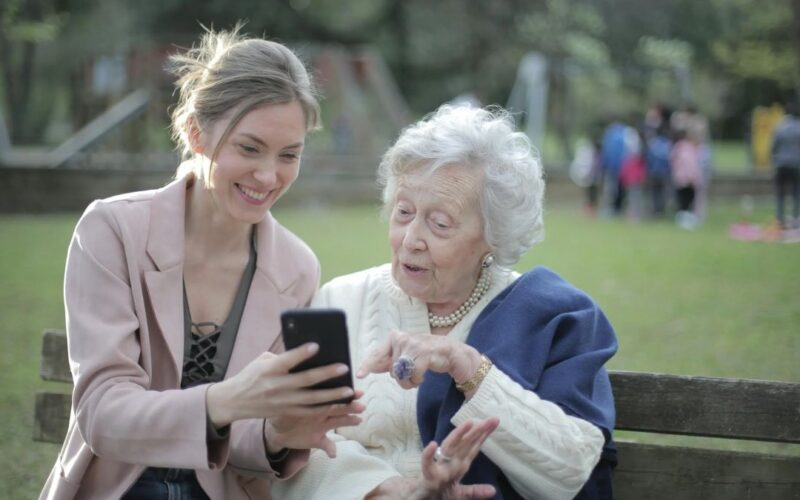In an increasingly digital world, smartphones have become essential tools for staying connected, accessing information, and engaging with the world around us. However, for many elderly individuals, navigating the complexities of modern smartphones can be daunting. With a wide range of features and options available, choosing the best smartphone for elderly people requires careful consideration of their unique needs, preferences, and technological proficiency. In this article, we’ll explore key factors to consider and features to look for when selecting a smartphone that is user-friendly and well-suited for seniors.
Simplified User Interface
When choosing a smartphone for elderly individuals, simplicity is key. Look for smartphones with a clean, intuitive user interface that is easy to navigate and understand. Large icons, clear text, and straightforward menus can help seniors feel more comfortable and confident when using their smartphones.
Large Display and Clear Visibility
Opt for smartphones with large, high-resolution displays that make it easy for elderly users to read text, view images, and navigate apps. A larger screen size reduces the strain on aging eyes and enhances visibility, particularly for individuals with vision impairments. Look for smartphones with adjustable font sizes and display settings to accommodate varying visual needs.
Physical Buttons and Tactile Feedback
Elderly users may prefer smartphones with physical buttons for essential functions such as volume control, power, and home navigation. Physical buttons provide tactile feedback and are easier to locate and press, especially for individuals with dexterity issues or arthritis. Consider smartphones with customizable button layouts and programmable shortcut keys for added convenience.

Hearing Aid Compatibility
For elderly individuals with hearing impairments, hearing aid compatibility is a crucial consideration when choosing a smartphone. Look for smartphones with M4/T4 or higher ratings for hearing aid compatibility, ensuring clear audio quality and minimal interference when using hearing aids. Additionally, smartphones with adjustable volume settings and enhanced audio features can further improve accessibility for seniors with hearing loss.
Simplified Calling and Messaging Features
Communication is a central aspect of smartphone use for seniors, so prioritize devices with simplified calling and messaging features. Look for smartphones with large, easy-to-press buttons for making calls and sending text messages. Features such as speed dial, voice-activated calling, and predictive text can streamline the communication process and make it more accessible for elderly users.
Accessibility Features
Many smartphones offer built-in accessibility features designed to enhance usability for individuals with disabilities, including seniors. Look for smartphones with features such as screen readers, magnification gestures, color inversion, and voice commands. These accessibility features can significantly improve the user experience for elderly individuals with visual, auditory, or mobility impairments.
Long Battery Life and Durability
Battery life and durability are important considerations when choosing a smartphone for elderly users who may not have the ability or inclination to charge their devices frequently. Look for smartphones with long battery life that can last a full day on a single charge, minimizing the need for frequent recharging. Additionally, opt for smartphones with sturdy construction and durable materials that can withstand accidental drops and bumps.
Emergency Assistance and Safety Features
Safety is a top priority for elderly smartphone users, so consider devices that offer built-in emergency assistance and safety features. Look for smartphones with dedicated emergency buttons or quick access to emergency contacts. Some smartphones also offer features such as fall detection, GPS tracking, and medical alert integration, providing added peace of mind for seniors and their caregivers.

User-Friendly Camera Features
For many elderly individuals, capturing and sharing memories through photos and videos is an important aspect of smartphone use. Look for smartphones with user-friendly camera features, such as simple camera interfaces, one-touch photo capture, and built-in editing tools. Additionally, consider devices with high-quality cameras and advanced imaging capabilities for capturing clear, vibrant photos and videos.
Customer Support and Training Resources
Finally, consider the availability of customer support and training resources when choosing a smartphone for elderly users. Look for manufacturers or service providers that offer comprehensive customer support, including phone hotlines, online tutorials, and in-person assistance. Additionally, explore smartphone models that come with pre-installed senior-friendly apps or software designed to simplify setup and usage for elderly individuals.
Empowering Elderly Users with Senior-Friendly Smartphones
Choosing the best smartphone for elderly individuals involves considering a range of factors, from simplicity and accessibility to safety and durability. By prioritizing features such as a simplified user interface, large display, physical buttons, hearing aid compatibility, simplified communication features, accessibility features, long battery life, emergency assistance, user-friendly camera features, and comprehensive customer support, you can select a smartphone that meets the unique needs and preferences of elderly users. With the right smartphone in hand, elderly individuals can stay connected, engaged, and empowered in the digital age.










